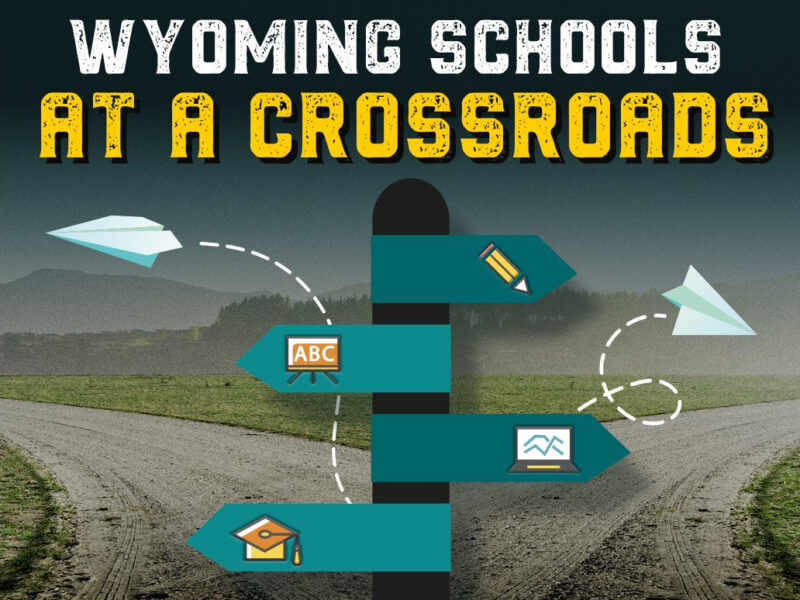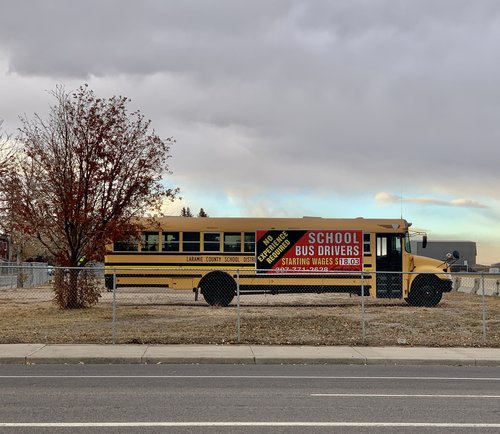WYOMING SCHOOLS AT A CROSSROADS: Education Support Professionals Leave Schools for Better Pay
Paraeducators, custodians, bus drivers say they can’t earn a living wage at Wyoming schools
- Published In: Other News & Features
- Last Updated: Nov 16, 2022

By Elizabeth Sampson
Special to the Wyoming Truth
Low pay and difficult work are making it hard for school districts statewide to fill open education support professional (ESP) positions for paraeducators, bus drivers, custodians, food service staff and others.
“We are losing people to Burger King,” said Laramie paraeducator Shasta Rosales, who holds down two additional jobs to make ends meet.

According to a survey by the National Education Association, the average salary for ESPs rose from $30,819 in 2011-12 to $35,124 in 2020-2021. However, when adjusted for inflation, the salary in 2012 dollars has fallen from $30,819 to $30,279.
“When accounting for inflation, education support professionals take home less money than they did 10 years ago,” said Wyoming Education Association President Grady Hutcherson. “They are the mortar that holds the bricks of our education system together. Without them, our schools simply couldn’t function.”
As the nation observes Education Support Professionals Day on Nov. 16, the Wyoming Truth spoke with ESPs about the challenges they are facing in Wyoming.
“People are frustrated,” said Christine Fitzgerald, a 23-year paraeducator in Cheyenne and the statewide ESP representative on the board of the education association.
“A lot of people who are working in ESP positions love kids. They want to do this job, but the lack of pay is driving a lot of people out.”
The health benefits ESPs earn in her district used to compensate for the low pay, but no longer, Fitzgerald explained.
“If you don’t even make enough money to pay your copay, that insurance is worthless to you,” she said. “Every business in town is hiring now, and they are hiring at a higher wage than what school districts are paying. People don’t want to leave, but they need to leave.”
Low pay compounded by stressful jobs
It’s not just the low pay that ESPs are struggling with. The work itself can be stressful and demanding.
“I have been hit, bit, bruised, kicked,” said Rosales, who assists two kindergarten students who have Individualized Education Programs (IEPs), provides math support to fifth graders and teaches social skills. “I’ve had a pencil go through my hand from a student. That comes out of [my pocket] because we don’t have workman’s comp” for injuries caused by students.

To pay her bills, Rosales also works as a respite care provider after school and helps the National Education Association revise micro credentials for ESP professional development. Additionally, she serves in the Wyoming ESP leadership cadre.
Tiffany Rivera, a bus driver in Cheyenne for seven years, loves getting to know the kids on her route, but finds other motorists to be a source of enormous stress.
“We are trying to keep our kids safe when [other drivers] are weaving in and out of traffic and then [cutting us] off because they don’t want to wait for [the bus],” Rivera said. “We have the frustration of cars constantly running our stop sign.”
Nicki Bain of Evansville, vice president of the Wyoming Custodians Association, has worked for school districts for over 20 years. She said custodians often face long hours and a lack of respect from other staff. Though Bain recently accepted a $1.35 per hour pay cut to work at a school where she is treated well, that hasn’t always been the case.
Bain used to struggle with teachers who did not respect her work and classrooms where she had to collect materials strewn across the floor before she could begin her actual job of vacuuming and disinfecting surfaces.
When there is illness in the school, Bain said custodians deep clean to keep students safe.
“Why aren’t we getting paid hazard pay?” she asked. “We, as custodians, every one of us, work really hard, and sometimes we don’t get the credit that is deserved.”
District leaders say hands tied by state budget
District leaders recognize that low pay is the driving factor causing vacancies.
Laramie County School District 1 (LCSD1) transportation administrator Adam Greenwood has had success advertising with banners on school buses this year, but there are still open positions. Greenwood said that while the bus driver role offers good benefits for a retiree or a young person with another breadwinner at home, it is difficult for someone who is the sole source of income for a household with kids.

“With inflation and everything else, it does make it very difficult to sustain a household on that bus driver pay,” he acknowledged.
LCSD1 currently has openings for about 20 special education paraeducators, 15 custodians, 20 substitute custodians and three food service workers, according to Vicki Thompson, assistant superintendent of human resources. Unlike a retail store, she noted, districts can’t pass the cost of higher wages on to consumers; instead, they must live within the state budget.
“We need the state legislators to fund education at 100%, because it’s really causing a lot of stress on our system and a lot of anxiety and stress for all of our employees,” Thompson said. “They do have full plates. There comes a point when you can’t ask them to do any more.”
Without needed funds from the state, districts are turning to stopgap solutions to make do.
A recent market study in Thompson’s district revealed many ESP wages were 8% to 9% below those of other public entities and the private sector. As a result, the district tapped reserve funds to increase pay for about two-thirds of its classified staff.
Brian Farmer, executive director of the Wyoming School Board Association, said each Wyoming community faces unique staffing challenges. Teton County battles an extremely high cost of living, while some towns compete for workers with the restaurant industry.
“There are places in Wyoming where fast food is paying $16, $17, $18 an hour, and that becomes competition for school districts,” he said.
In Converse County, Farmer noted, someone with a commercial driver’s license can earn a much higher wage driving for an energy company than for the school district. To combat that, district human resources director Steve Walker said eligible bus drivers will be allowed to retire and collect retirement benefits, but then the district will rehire them so they can continue to receive a weekly paycheck. He said the district would like to award annual pay increases across all departments, but it doesn’t have the budget to do so.
“When the legislature doesn’t provide us a cost of living adjustment, our hands are tied because we only get so much money,” Walker said.
However, providing a living wage would help solve the shortage problem, according to Rosales.
“I think ESPs have been systematically undervalued and underappreciated,” she said. “It’s just so much pressure on us, and we don’t have support—not financially, not emotionally. We’re dropping like flies because nobody is there to help pick us up.”













